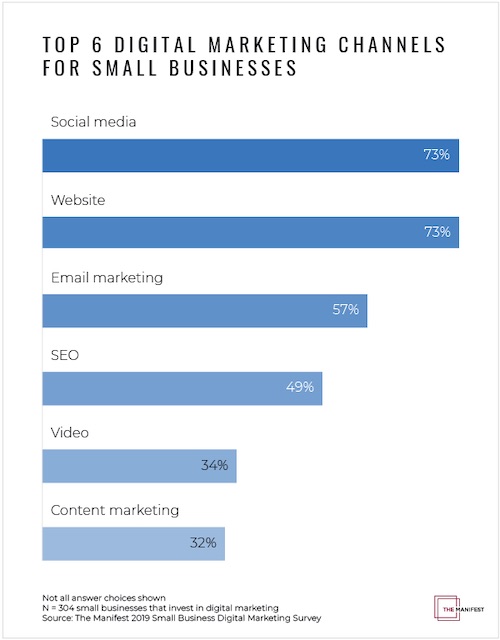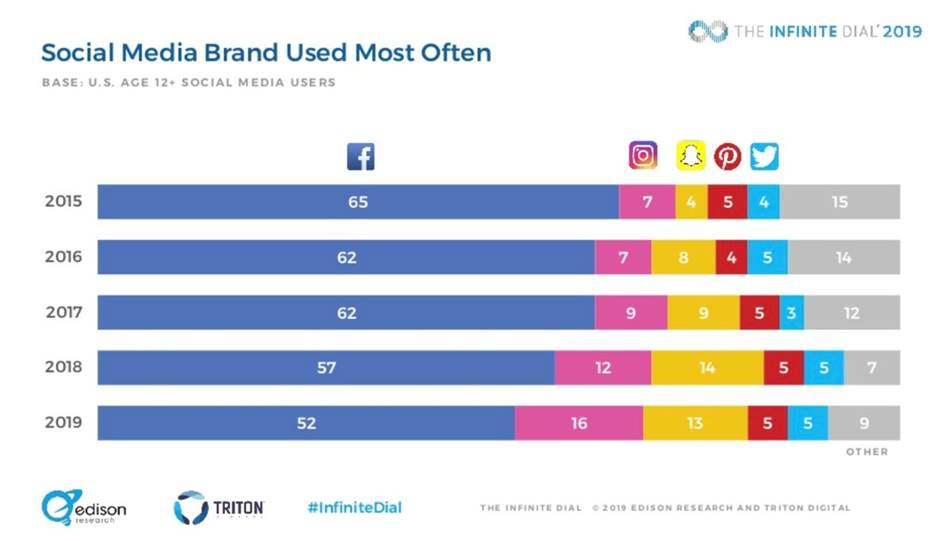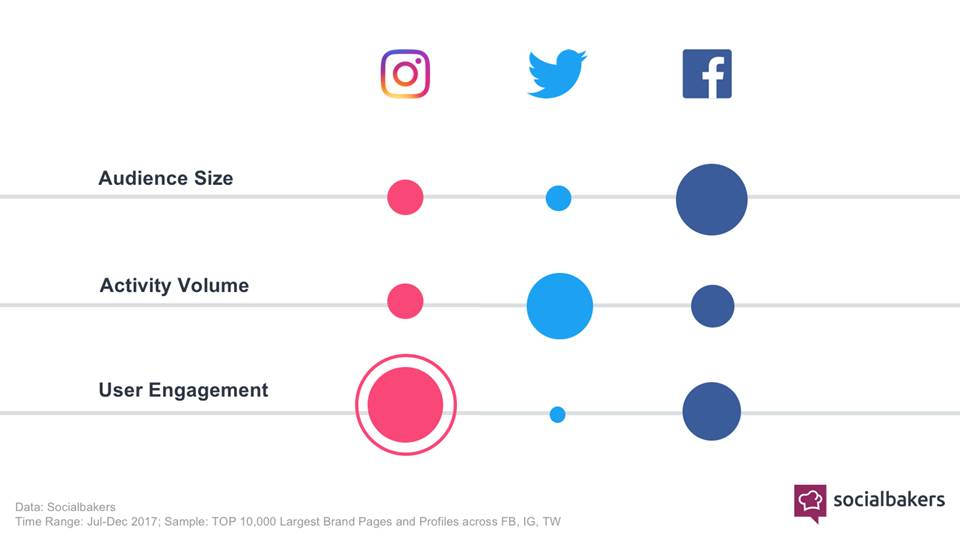
Hitting the “Start Live Video” button on Facebook Live or your social media site of choice can be intimidating. Even people who do live streams all the time likely get butterflies before beginning a live broadcast. But as with most things in life, practice and preparation are two key ingredients for a successful live broadcast.
In this post, I’ll help you choose a social networking site for your live broadcast, share a few basic live-stream formats, equipment you’ll need, how to prepare, and ways to make the most of your effort. Follow these basic tips and you’ll be well on your way to live stream stardom.
Which Social Media Platform is Best for Live Streaming?
The first thing you’ll want to consider is which platform to use. This mostly depends on where your largest, most-engaged audience is, and which platform will get you the most exposure. When Facebook Live first launched, it made a huge splash and was an immediate success among early adopters. But since then, other social networking sites have launched live broadcasting features of their own and you may find success on a platform other than Facebook. In this post, I’ll be sharing ideas that cater to Facebook Live as that is what I am most familiar with. However, the same principals can be applied to most other social media sites.
What Format is Best for Live Streaming?
There are three basic formats to consider for a live broadcast: single shot, one-on-one interview, and the walk and talk format. Of these, the single-shot method is the simplest, but requires the most preparation because it means you’ll be speaking directly into the camera, making sure to get all your main points across.
With a one-on-one interview, you’ll have a little more freedom to ‘wing it’ as you’ll be relying on your guest to fill most of the time. With the interview format, it’s important to have a set of questions ready to go; just as a reporter would.
Finally, the walk and talk format requires the least amount of preparation, but also runs the risk of being a bit boring if you don’t have a solid game plan or are not in an interesting environment (such as a busy tradeshow floor or a behind-the-scenes look at a major sports venue).
There are plenty of other live-streaming options such as broadcasting a keynote speaker at an industry event, hosting a live Q&A, or running a whiteboard session, but the above-mentioned formats can all be achieved with nothing more than a smartphone and a good Wi-Fi connection. However, even if you plan to simply broadcast straight from your smartphone, you may want to consider a few pieces of equipment to ensure a high-quality live broadcast.
What Equipment is Needed for a Live Broadcast?
Again, all you really need is a smartphone and a strong Wi-Fi connection. Of the three formats I discussed earlier, the one-on-one interview can benefit the most from some additional equipment. Luckily, you still do not need much and can easily put in an order for each item on Amazon. Here my recommended items:
- Tripod with 3-way head. Having something to stabilize your phone during your live stream is easily the most important aspect of a high quality live broadcast. Although a video shot using a smartphone’s native camera app generally comes out looking smooth, that image stabilization is achieved using tech within your phone, which unfortunately does not carry through during a live broadcast. Use a tripod. You can spend hundreds on a good tripod, but I recommend the middle-of-the-road Manfrotto Compact Advanced Aluminum 5-Section Tripod Kit with 3-Way Head.
- Smartphone Clamp. This is a mandatory item if you plan on using a tripod. This is what screws into the tripod head and holds your smartphone. You can find them for about $5-$10. You can get a spring-loaded version or screw-adjustable version.
- Lavalier Microphone. If you’re planning on shooting in a noisy area (such as a trade show floor or busy city street), a lavalier (or lav) mic can help cut out much of the background noise and only pick up the voice directly in front of the mic. Even if you’re filming in an quiet room, the audio quality will be greatly enhanced with the use of an external lavalier mic. Although I have not used this particular mic, this dual lav mic from MAONO should get the job done. If you want to do walking interviews, you might want to invest in a wireless mic system or even a handheld mic. If you’ll be using an iPhone 5 or newer for your live broadcast, you’ll need one of those pesky headphone dongles.
- LED On-Camera Light. Good lighting is crucial to shooting a high-quality video. While it’s preferable to find a room with abundant natural light or use a soft-box light kit, a simple on-camera LED light works well in a pinch or just to fill in any shadows cast on your subject. This one on Amazon has everything you’ll need and only costs 38 bucks.
- L Bracket Camera Mount. If you’re going to use an LED light, this is what you’ll mount it on. With an L bracket, you also have the option of adding a shotgun mic or an additional LED light. This one on Amazon is only $10.
Preparing for a Live Broadcast
Once you’ve chosen which platform you plan to live stream from, decided on the format, and purchased any needed equipment, it’s a good idea get everything set up and make sure it is all working the way you envisioned it. Take a photo of your setup for reference when you’re setting up for the actual live stream. Take notes and write out a checklist of items to remember to have on hand for your live stream – this is especially important if you’ll be broadcasting on-location.
While you can’t actually start a live stream, you can at least set everything up and do a dry run. If you’re planning to interview someone, practice with a coworker or friend so that you feel comfortable with the questions you plan to ask. This is also a time to review your video to make sure you have the shot you want.
Along with a basic equipment check and practicing on camera, you’ll want to do the necessary prep work before you head out to your live broadcast location (whether that’s at your office or in another city at a trade show). Be sure to reach out to any guests or interviewees well in advance to make sure they’re comfortable doing a live broadcast. Once you have their confirmation, it is a good idea to let them know the basic format and send them any questions you plan to ask, or if they’ll be on camera alone, exactly what information you’d like them to share.
For a Facebook Live, you’ll also want to create a document with copy included in the post or any preview posts. This includes a short, descriptive headline, correct spellings and titles of any guests, and a longer description of your video. You may also want to draft out and schedule tweets or posts on other social sites to cross-promote the live broadcast.
What to do after Shooting a Facebook Live Broadcast
One thing that’s nice about Facebook Live is that you have the option to download the hi-def version of the video. But beware – you must download this immediately after your broadcast ends and before posting to your page. If you wait until after uploading the post to your feed, then you can only down load the lower quality video that was shared live (usually 360p instead of 1080p). Once you’ve saved the high-definition video, you can then make any necessary edits and share to other social sites (YouTube, LinkedIn, IGTV, and so on). Here are a few ideas for getting more out of your video:
- Embed the video to your website
- Share video in an email
- Cut video into smaller snippets for use in multiple social media posts
- Create GIFs and pair with direct quotes from the video
Although a live-video broadcast can be intimidating, it is often well worth the extra legwork for the engagement it can bring to your overall social media marketing strategy. With a bit of preparation and some practice, live streaming will become easier and even fun over time. What tips do you have for going live on social media?











